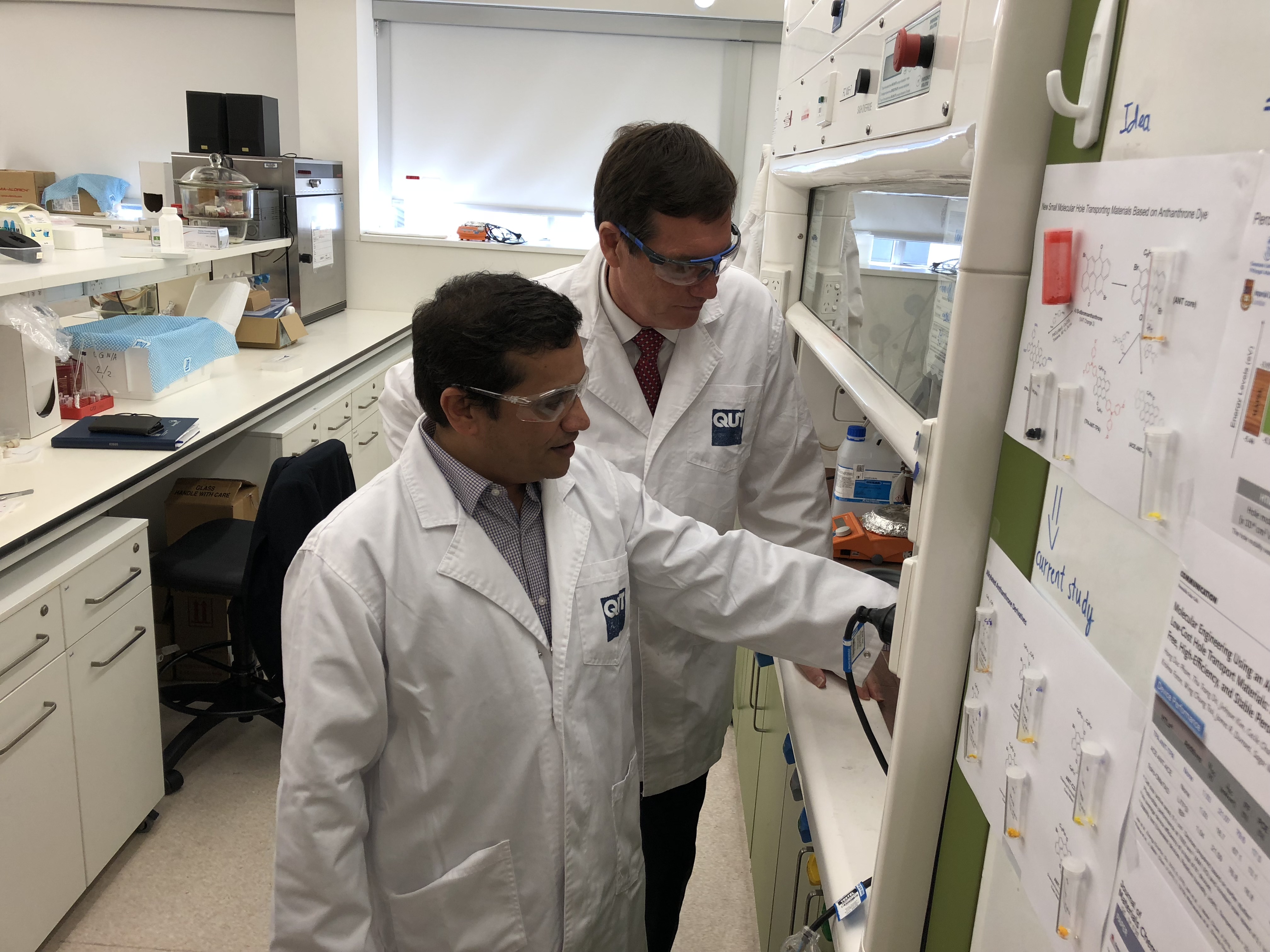
QUT researchers have developed a new material that has the potential to change the renewable power industry by delivering highly efficient, stable and considerably cheaper solar technology.
Based on an orange dye called anthanthrone, the material is used to produce printable ‘perovskite’ solar cells, which could ultimately be manufactured as blinds, shade sails and even clothing.
QUT Associate Professor Prashant Sonar said, after almost a decade of work on the development of the material, the breakthrough held great promise.
“The types of solar panels that many people think of are the sort that sit on a roof. These are silicon based and are large and rigid. Perovskite is an emerging technology for developing solar cells, which has become increasingly efficient in recent years and allows for much greater flexibility in its use,” Associate Professor Sonar said.
“One of the key issues for solar cell technology though is cost, so our work has been focused on using a very low cost dye based material. It is about five times cheaper than the material that is currently used for perovskite and this means that solar panels could eventually be produced for a fraction of the price that they are now.
“The other challenges were to ensure the solar cells were stable and efficient in changing weather conditions and I am pleased that, with careful engineering, we have been able to achieve both. Together with colleagues at Swansea University, we have shown for the first time, how low-cost anthanthrone-dye-based hole transporting materials can exhibit higher performance, with 17.5% efficiency, and retain respectable performance after 50 hours in 58% relative humidity.
“These improvements in perovskite solar cells have the potential to change the solar industry and make perovskite the best low cost, high efficiency solar cell material in coming years,” he said.

Queensland Energy Minister, Dr Anthony Lynham, who visited QUT to inspect the research, has congratulated Associate Professor Sonar and his team for their work.
“Queensland leads the way with rooftop solar and in the number of solar projects operational now and in the building, and planning and construction stages, so it is hardly surprising that Queensland researchers also are at the cutting edge,’’ Dr Lynham said.
“Professor Sonar and his team may well have made the breakthrough that will make future solar panels affordable for more and more Queenslanders.
“Queenslanders are so often at the forefront of research in many fields and this is another classic example of this.’’
Associate Professor Sonar said the next step would be to commercialise the product as a printable solar material, with work also progressing to produce perovskite solar cells lead-free.
The work has been published in Advanced Energy Materials. Molecular Engineering Using an Anthanthrone Dye for LowCost Hole Transport Materials: A Strategy for DopantFree, HighEfficiency, and Stable Perovskite Solar Cells is accessible here: https://onlinelibrary.wiley.com/doi/abs/10.1002/aenm.201703007
A video linked to the paper can be viewed here: https://www.youtube.com/watch?v=hgLkeFves7o&feature=youtu.be
Media contact:
Rebecca Nardi, QUT Media, 3138 9449 or rebecca.nardi@qut.edu.au
After hours, Rose Trapnell, QUT Media team leader, 0407 585 901, media@qut.edu.au


